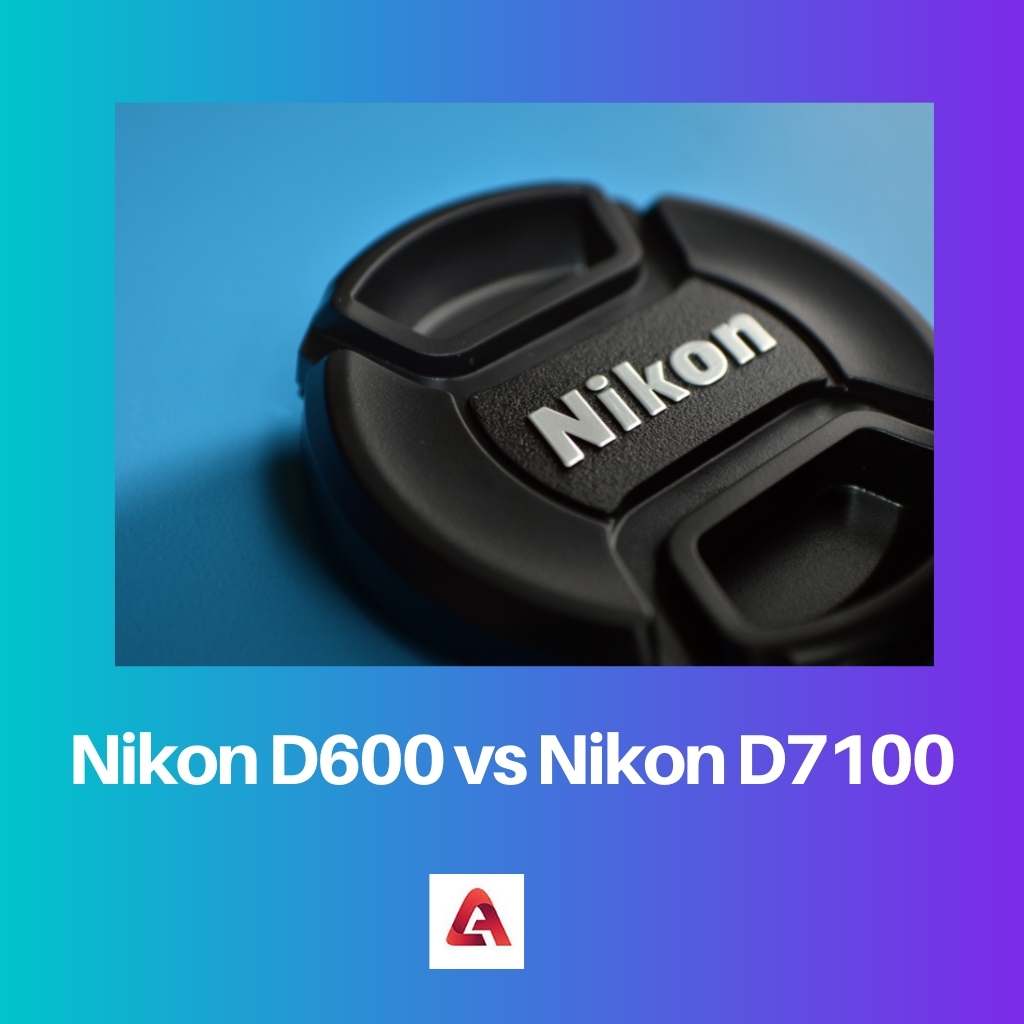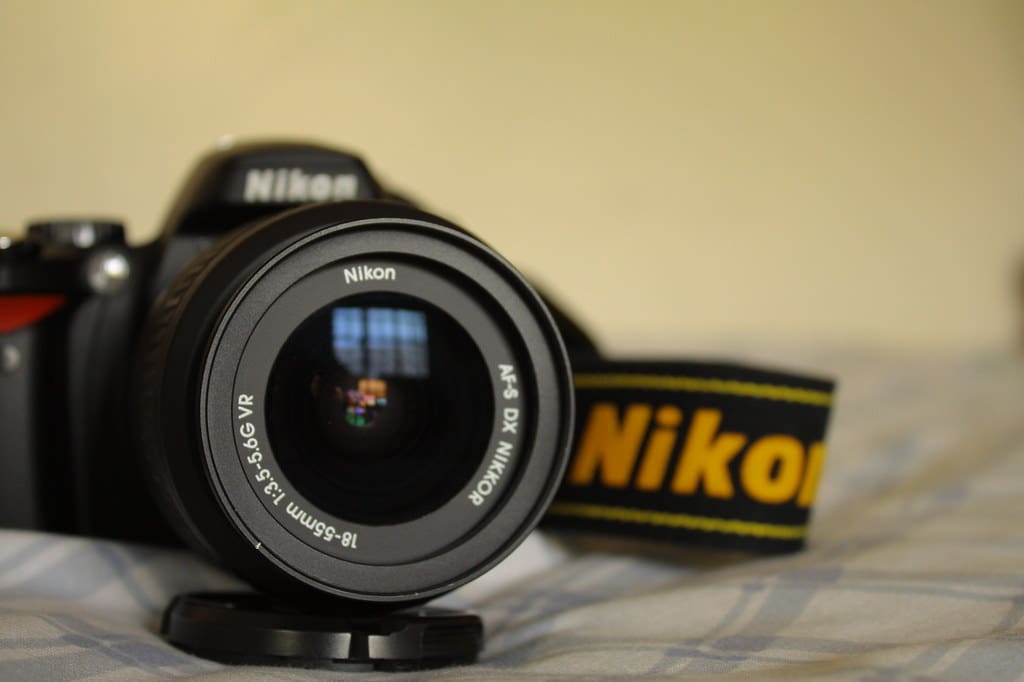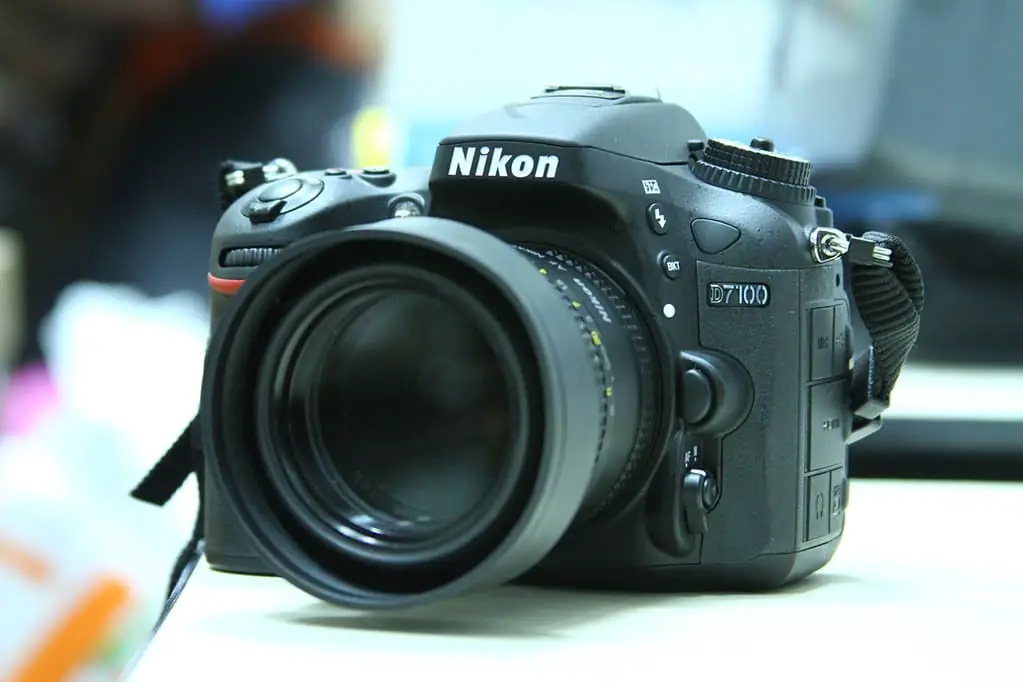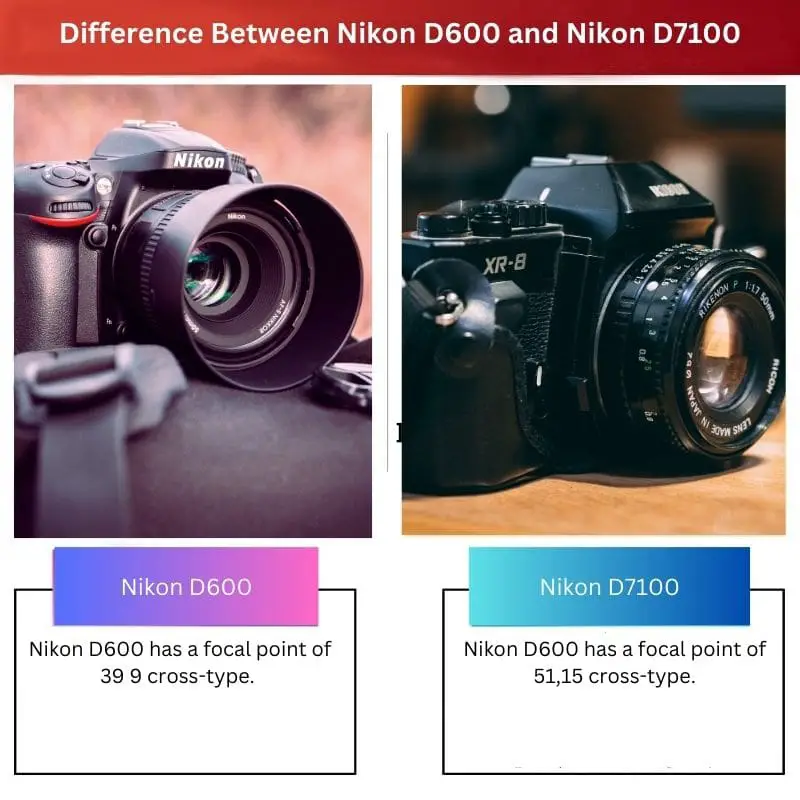Nikon is a famous company in Japan known for its specialization in imaging products and optics. Nikon Group holds the company and has its headquarters in Tokyo, Japan. Nikon company is famous for manufacturing cameras, lenses, and many other products that include binoculars, ophthalmic lenses, measurement instruments, rifle scopes, microscopes, spotting scopes, and the steppers used in photolithography steps of semiconductor fabrication, etc.
Nikon came into existence on 25th July 1917. It is one of the members of the Mitusubi Group. Nikon’s digital single-lens cameras are very popular, like Nikon D600 and Nikon D7100.
Key Takeaways
- The Nikon D600 features a full-frame sensor, providing better image quality and low-light performance.
- The Nikon D7100 offers a higher pixel density, resulting in more detailed images and better cropping flexibility.
- The D600 is a more advanced camera suited for professionals, while the D7100 is an excellent option for enthusiasts.
Nikon D600 vs Nikon D7100
The Nikon D600 is a full-frame camera with a 24.3-megapixel sensor, while the D7100 has an APS-C-sized sensor with a resolution of 24.1 megapixels and is more affordable. The D7100 has a more advanced autofocus system with 51 autofocus points compared to the 39 autofocus points on the D600.

Nikon D600 is a digital single-reflex camera with 24.3 megapixels in FX format, meaning it has a full frame. This type of camera was launched for enthusiasts and professionals. D600 was released in 2012. It uses the same type of i8mage processor, Expeed 3, as its predecessors D4 and D800 series.D600 has a very wide dynamic range. Because of its HDR quality, it helps to shoot images and videos even in darkening areas. The image quality of the D600 was also very good, as it was ranked as the third-best camera sensor.
Nikon D7100 is called a prosumer model because it has replaced its predecessor, D7000. This DSLR camera was launched one year after 600, i.e., in the year 2013. It was the first Nikon DSLR camera which doesn’t include the optical low pass filter. It has an advanced autofocus mode with a focus point of 51. Like D600, it also has the image processor of Expeed 3. It has a 3.2-inch LCD monitor containing a GPS interface. Plus point of D7100 is that it allows the additional feature of cropping images, i.e., up to 1.3 x times.
Comparison Table
| Parameters of Comparison | Nikon D600 | Nikon D7100 |
|---|---|---|
| Focus Point | 39, 9 cross-type | 51, 15 cross-type |
| Low Pass Filter | Yes | No |
| Image quality | Higher | Lower |
| Pixel density | Lower | Higher |
| Higher Resolution | Lower | Good and has a stereo microphone. |
What is Nikon D600?
D600 has a higher sensor for image quality as it was ranked as the third highest-rated camera by DxOMark. The D600 user interface and the build quality come somewhere between the D7000 and D 800 series. All the video qualities found in the ikon D800 can also be found in D 600. But D 600 body cannot adjust to the aperture during video recording. There was a little disadvantage with the D600: it has a dust accumulation in its sensor. So Nikon replied that its blower bulb has to be cleaned manually before bringing that problem to the service center.
Shortly after the D600 series was released, a more advanced version, i.e., D610, was released in 2013. It has a slightly better feature than D600. Unlike D600, which contains the shutter unit, D610 doesn’t have it. After the arrival of the D610, D600 was discontinued from the market. One of the features of the D600 includes that it has a high-dynamic-range imaging mode. It has a focal point of 39 AF. It has a maximum resolution of 24.3 megapixels.
D600 contains an in-built ti,e-lapse photography intervalometer. It becomes ready for shooting up in less than 0.13 seconds. It has a movie live view feature for videos and live view photography for photos. It has a larger viewfinder, higher color depth, better ISO performance, and a 133% larger pixel area.

| # | Preview | Product | |
|---|---|---|---|
| 1 |

| Nikon D7500 DX-Format Digital SLR Body | Check Price on Amazon |
What is Nikon D7100?
Nikon D7100 has a DX sensor, i.e., APS-C size in the Nikon family. D7100 has a short sensor size when compared to D600. It has an anti-aliasing filter, meaning D7100 can take sharp images and be advantageous when clicking the picture. Because of this filter, it also has a good lens. The speed of the D7100 is slightly faster than the D600. It can shoot images at 7 fps. The crop facility of D7100 is also very good as it can crop images up to 1.3 x. However, the buffer size of D7100 is small, so it can accompany only 16 smallest RAW files.
If the files exceed 16, the buffer of D 7100 fills up and slows down. The Autofocus system of D7100 is very much good as it has a focal point of 51 and uses high-end full-frame cameras. The shutter speed of D7100 is very much higher when compared with 600, as it can go all the way up to 1/8000.
Syncing speed and Bracketing are also very much better, i.e., 1/250 and 2 to 5 frames. It can increase fast prime lenses and can be better at shooting. D7100 also has a higher resolution, i.e., 1.2 million dots. The price of the Nikon D7100 is slightly less than its previous versions.

Main Differences Between Nikon D600 and Nikon D7100
- Nikon D600 has a focal point of 39 9 cross-type. Nikon D600 has a focal point of 51,15 cross-type.
- Nikon D600 contains a low-pass filter. While D7100 contains an anti-aliasing filter.
- Nikon D600 has a higher image quality than D7100.
- Nikon D7100 has a higher pixel density than D600.
- Nikon D7100 has a good HDR with a stereo microphone than Nikon D600.







